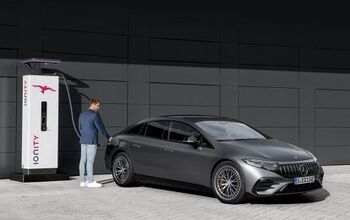2 Views
Credit Suisse: GM's Purge and Binge Production
by
Robert Farago
(IC: employee)
Published: September 13th, 2008
Share
A member of our Best and Brightest sent us some interesting auto industry stats, compiled by Senior equity research analyst at the Credit Suisse Group (CSR). Et Voilà!
• Big 3 dealer stocks declined by about 79,000 units, or 4.9%, to 1.55 million vehicles in August from 1.63 million in July. The 4.9% decline is favorable relative to the increase of about 1% normally seen this time of year.
Robert Farago
More by Robert Farago
Published September 13th, 2008 10:32 AM
Latest Car Reviews
Read moreLatest Product Reviews
Read moreRecent Comments
- Rna65689660 For such a flat surface, why not get smoke tint, Rtint or Rvynil. Starts at $8. I used to use a company called Lamin-x, but I think they are gone. Has held up great.
- Cprescott A cheaper golf cart will not make me more inclined to screw up my life. I can go 500 plus miles on a tank of gas with my 2016 ICE car that is paid off. I get two weeks out of a tank that takes from start to finish less than 10 minutes to refill. At no point with golf cart technology as we know it can they match what my ICE vehicle can do. Hell no. Absolutely never.
- Cprescott People do silly things to their cars.
- Jeff This is a step in the right direction with the Murano gaining a 9 speed automatic. Nissan could go a little further and offer a compact pickup and offer hybrids. VoGhost--Nissan has laid out a new plan to electrify 16 of the 30 vehicles it produces by 2026, with the rest using internal combustion instead. For those of us in North America, the company says it plans to release seven new vehicles in the US and Canada, although it’s not clear how many of those will be some type of EV.Nissan says the US is getting “e-POWER and plug-in hybrid models” — each of those uses a mix of electricity and fuel for power. At the moment, the only all-electric EVs Nissan is producing are the Ariya SUV and the perhaps endangered (or maybe not) Leaf.In 2021, Nissan said it would make 23 electrified vehicles by 2030, and that 15 of those would be fully electric, rather than some form of hybrid vehicle. It’s hard to say if any of this is a step forward from that plan, because yes, 16 is bigger than 15, but Nissan doesn’t explicitly say how many of those 16 are all-battery, or indeed if any of them are. https://www.theverge.com/2024/3/25/24111963/nissan-ev-plan-2026-solid-state-batteries
- Jkross22 Sure, but it depends on the price. All EVs cost too much and I'm talking about all costs. Depreciation, lack of public/available/reliable charging, concerns about repairability (H/K). Look at the battering the Mercedes and Ford EV's are taking on depreciation. As another site mentioned in the last few days, cars aren't supposed to depreciate by 40-50% in a year or 2.


































Comments
Join the conversation
I was wondering when we would start using the term Dinosaurs around here to denote the big SUVs. Remember in the 70s that's what we called those huge domestic sedans.